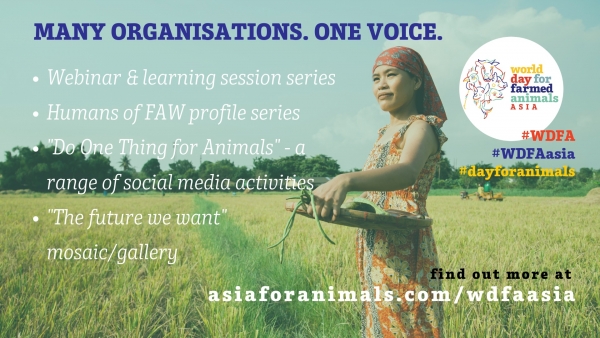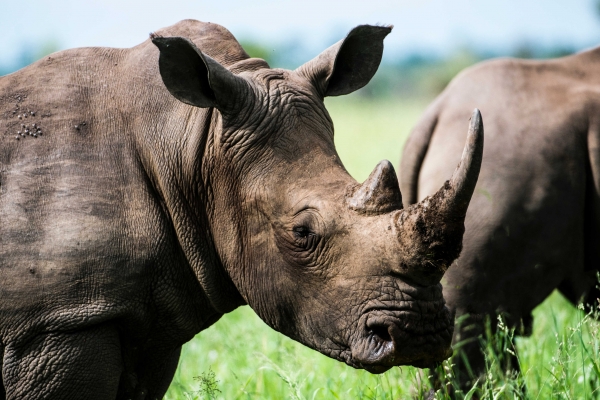
Updated December 2014
Government Structures
Committees/Councils
Consultation
Openness and Transparency
Procedures
Government Structures
Government structures set up to deal with animal protection matters are a great indicator of the political importance of animal protection in the country in question. They can also greatly influence the strength with which animal protection matters are developed and pursued. The level of a government department’s involvement with animal protection can vary greatly. Key considerations on systems and structures would include: where the animal protection remit is sited in government, how this is staffed and organized, and the roles and responsibilities of competent authorities and involved parties (including official bodies, enforcement authorities, animal professionals, trade and industry, non-governmental organizations, consumer groups, the public and animal welfare committees). An exploration of the current landscape of such involvement can be found in the explanatory notes to World Animal Net’s Model Animal Welfare Act.
Did you know?
Former Minister Maneka Gandhi was instrumental to creating an Animal Welfare Ministry in India. The desire to create an independent animal welfare department was Ms. Gandhi’s first ambition when entering politics. She wanted to bring together all the animal-related inspection services in one branch of government that would answer to no other (possibly with conflicting objectives) and vigorously enforce the recommendations of the Indian Animal Welfare Board. Today in India, the Animal Welfare Division falls under the Ministry of Environment and Forests.
Committees/Councils
Government advisory committees can play a significant role in providing feedback and expert advice to government in animal protection matters. The role and scope can vary greatly from being a committee dealing with all aspects of animal protection (every subject area and both ethical and practical/enforcement issues - as in the Czech Republic) to a committee with more specific scope (such as an ethical committee concerned with biotechnology). The best arrangement will depend on the country's legislative and enforcement structure. However, if a country does decide to have just one advisory committee covering all areas of animal protection, then it is important that it is broken down into small sub-groups, each containing a wide range of expertise in the relevant subject area. Advisory committees should not merely consist of representatives from the 'Animal Use' industries. A proper balance between animal protection, animal use and neutral government and scientific representation is important.In some countries (and the EU) there can be too many committees involved with animal protection issues - leading to confusion, dissolution of effort and, in some cases, committees with insufficient expertise considering matters of animal ethics/welfare. Also, some general ethical committees may take a more 'humanist' approach and give low priority to animal protection matters. In general, a broad-ranging and powerful animal protection committee is preferable. The remit of such a committee could include:
- New issues of concern in/to the animal protection field
- Beneficial developments in/to the animal protection field
- New and relevant animal welfare science/research
- Problems with existing laws and enforcement
- New legislation or amendments needed
- Further research needed
- Further educational initiatives needed
- Relevant issues of 'openness of government'
Considerations of major interest to animal protection organizations include:
- Independence and influence (including ability to publish open reports - including minority reports)
- Representation (need for adequate animal protection representatives - of various opinions i.e. animal rights & animal welfare - and other relevant experts, such as veterinarians, animal behaviorists, ethicists, biologists, zoologists etc.). Appointments usually on personal basis.
- Access to all government information and statistics.
Within the European Union (EU), there have been moves to coordinate and exchange information between the various national animal protection committees.
Consultation
Animal protection organizations should press for full and open consultation on all matters affecting - or likely to affect - animal protection. In particular:
- Full consultation of animal protection groups on same basis as industry
- Representation at all consultation meetings
- Written consultation - with results published (transparency)
Openness and Transparency
Animal protection organizations should also press for full openness and 'transparency' in government processes. In particular:
- Access to all documents/reports
- Access to meetings and minutes
- Access to civil servants/legislators
Procedures
Animal protection organizations should ensure that their government has satisfactory procedures in place to deal in a practical and foolproof manner with any animal protection matters. Do they, for example, have a system, for identifying any animal welfare implications arising from proposed new legislation or administrative actions? This is particularly important if your country has a constitutional obligation to protect animals. Without adequate procedures, the government may itself be in breach of the constitution!
In the environmental field, environmental impact is routinely assessed using procedural devices such as 'environmental impact assessments', designed to ensure that environmental implications are routinely considered by government legislators and administrators. Animal protection organizations could call for similar treatment - requiring an 'animal welfare impact assessment' - to ensure full consideration of the impact of proposed measures on animal welfare.

Updated December 2014
The Treaty (EU Constitution)
EU Animal Welfare Provisions
Status of EU Legislation
Eurogroup for Animals
The European Coalition to End Animal Experiments
The Treaty (EU Constitution)
The European Union (EU) was established by the Treaty of Rome (EEC Treaty or TEC) signed in 1951, with the objective of safeguarding peace and promoting economic and social progress in Europe. The EU is essentially an area of economic activity and trade without internal frontiers. The Treaty identified animals as 'goods' or 'agricultural products'. There were no powers in the Treaty of Rome to introduce EU legislation for the specific purpose of protecting animals. Thus, any measures to protect animals were supposed to be secondary to the primary purpose of the legislation (such as harmonization of Member States laws).
There was some improvement in this situation in 1992, when the Treaty of the European Union was signed in Maastricht (The Maastricht Treaty). A declaration was agreed, which was annexed to the Treaty rather than integrated into its provisions. This required the European Institutions to take account of animal welfare when considering legislation in the areas of research, transport, agriculture and the internal market.
The European Union heads of state of government meeting in Amsterdam June 16 1997 agreed to include a special legally binding protocol on animal welfare in the new European Union Treaty (The Amsterdam Treaty). The text of this protocol is repeated below:
Protocol to the EUROPEAN UNION TREATY (THE AMSTERDAM TREATY)
"THE HIGH CONTRACTING PARTIES
DESIRING to ensure improved protection and respect for the welfare of animals as sentient beings
HAVE AGREED upon the following provision which shall be annexed to the Treaty establishing the European Community:
In formulating and implementing the Community's agriculture, transport, internal market and research policies, the Community and the Member States shall pay full regard to the welfare requirements of animals, while respecting the legislative or administrative provisions and customs of the Member States relating in particular to religious rites, cultural traditions and regional heritage."
This protocol was introduced following strong pressure from the animal protection community. It introduced a clear legal obligation for the Community institutions (Commission, Parliament and Council) to pay full regard to the welfare requirements of animals. It did not, however, extend the competence of the Community to include animal welfare per se within its remit. Furthermore, there is a growing movement in favor of the principle of 'subsidiarity' in the EU, which considers that EU legislation should only cover areas which impinge upon EU trade/economy, and that other matters - such as animal welfare - should be dealt with at national level.
EU Animal Welfare Provisions
There is more about the EU’s work on animal welfare, including its animal welfare strategy and areas of interest on its website.
Further details on animal protection law at EU level can also be obtained from Eurogroup for Animals.
Status of EU Legislation
All the EU's welfare legislation is legally binding upon Member States, and the country can be taken to the European Court of Justice for any cases of non-compliance. The EU's animal welfare legislation takes the form of Regulations, Decisions or Directives, although the latter is more usual in the field of animal welfare. The difference is as follows:
Regulations
Have general application and direct force of law in all member states. If there is conflict with a national law, the regulation prevails. There is no need to transpose regulations into national legislation for them to take effect.
Directives
Binding on member states as to the results to be achieved, but leaves the method of implementation to national governments. They should be transposed into national law.
Decisions
Binding on those to whom they are addressed (can be member states, companies or individuals).
The Eurogroup for Animals forms the Secretariat of the Intergroup on the Welfare and Conservation of Animals (the European Parliament group established to consider these matters). Eurogroup carries out political lobbying at EU level on all animal welfare matters. Its objective is to work towards "the introduction, implementation and enforcement of animal welfare legislation in the European Union." It has member societies in most of the EU member countries.
Eurogroup is a useful source of information on EU animal welfare legislation. See Useful Resources and Contacts
The European Coalition to End Animal Experiments was established in 1990, originally as the European Coalition to End Cosmetic Testing on Animals and later expanding its remit to include all areas of animal experimentation. The European Coalition comprises active animal welfare/rights groups throughout Europe sharing a common interest in working together to end animal experimentation. The European Coalition's early flagship campaigns were cosmetic testing and the use of primates for research, but it now covers all areas of animal experimentation in its lobbying activities.


 In 2013, I joined World Animal Net (WAN) alongside Akisha
In 2013, I joined World Animal Net (WAN) alongside Akisha World Animal Net has brought together animal protection and environmental
World Animal Net has brought together animal protection and environmental World Day for Farmed Animals Asia is on October 2nd
World Day for Farmed Animals Asia is on October 2nd The Convention on Biological Diversity (CBD) is an international agreement
The Convention on Biological Diversity (CBD) is an international agreement